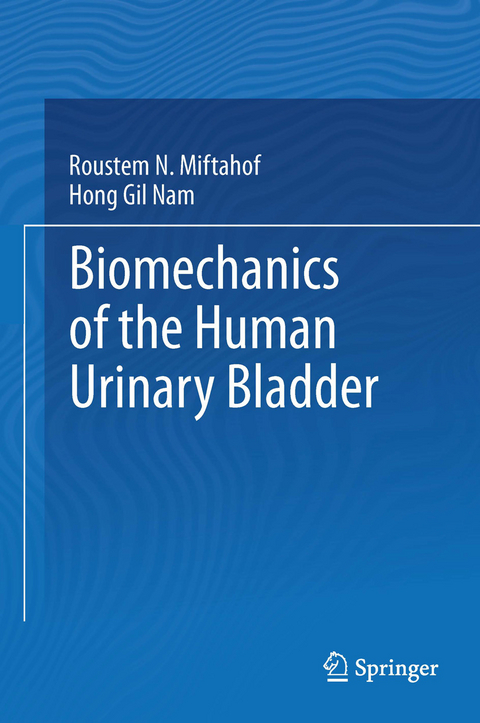
Biomechanics of the Human Urinary Bladder
Seiten
2015
Springer Berlin (Verlag)
978-3-642-43647-5 (ISBN)
Springer Berlin (Verlag)
978-3-642-43647-5 (ISBN)
This step-by-step introduction to mathematical modeling of the human urinary bladder reviews recent discoveries in biomechanics of the urinary bladder and presents the systematic development of a mathematical model of the organ as a thin soft biological shell.
As a research subject, the biomechanics of the urinary bladder are relatively young, yet medical problems associated with them are as old as mankind. Offering an update on recent achievements in the field, the authors highlight the underlying biological, chemical and physical processes of bladder function and present the systematic development of a mathematical model of the organ as a thin, soft biological shell. The book will be a valuable resource for postgraduate students and researchers interested in the applications of computational mathematics and solid mechanics to modern problems in biomedical engineering and medicine.
As a research subject, the biomechanics of the urinary bladder are relatively young, yet medical problems associated with them are as old as mankind. Offering an update on recent achievements in the field, the authors highlight the underlying biological, chemical and physical processes of bladder function and present the systematic development of a mathematical model of the organ as a thin, soft biological shell. The book will be a valuable resource for postgraduate students and researchers interested in the applications of computational mathematics and solid mechanics to modern problems in biomedical engineering and medicine.
The Bladder as a Dynamic System.- Investigations into Biomechanics of the Bladder.- Geometry of Thin Shells.- Essentials of the Theory of Soft Shells.- Continual Model of the Detrusor.- A Model of the Detrusor Fasciculus.- The Intrinsic Regulatory Pathways.- The Synaptic Transmission.- Pharmacology of Detrusor Activity.- Human Urinary Bladder as a Soft Biological Shell.- Challenges in Human Urinary Bladder Mechanics.
| Erscheint lt. Verlag | 7.3.2015 |
|---|---|
| Zusatzinfo | XXI, 177 p. 43 illus., 10 illus. in color. |
| Verlagsort | Berlin |
| Sprache | englisch |
| Maße | 155 x 235 mm |
| Gewicht | 314 g |
| Themenwelt | Informatik ► Weitere Themen ► Bioinformatik |
| Mathematik / Informatik ► Mathematik ► Algebra | |
| Medizin / Pharmazie ► Medizinische Fachgebiete | |
| Studium ► 1. Studienabschnitt (Vorklinik) ► Physiologie | |
| Naturwissenschaften ► Biologie | |
| Naturwissenschaften ► Physik / Astronomie ► Angewandte Physik | |
| Schlagworte | Biomechanics • Diseases of the bladder • Human urinary bladder • mathematical model • soft biological shell • systems biology |
| ISBN-10 | 3-642-43647-1 / 3642436471 |
| ISBN-13 | 978-3-642-43647-5 / 9783642436475 |
| Zustand | Neuware |
| Informationen gemäß Produktsicherheitsverordnung (GPSR) | |
| Haben Sie eine Frage zum Produkt? |
Mehr entdecken
aus dem Bereich
aus dem Bereich
Internationale statistische Klassifikation der Krankheiten und …
Buch | Softcover (2024)
Deutscher Ärzteverlag
24,98 €
Operationen- und Prozedurenschlüssel; Internationale Klassifikation …
Buch | Softcover (2024)
Deutscher Ärzteverlag
24,98 €
Allgemeine und spezielle Kodierrichtlinien für die Verschlüsselung …
Buch | Softcover (2024)
Deutscher Ärzteverlag
9,99 €


